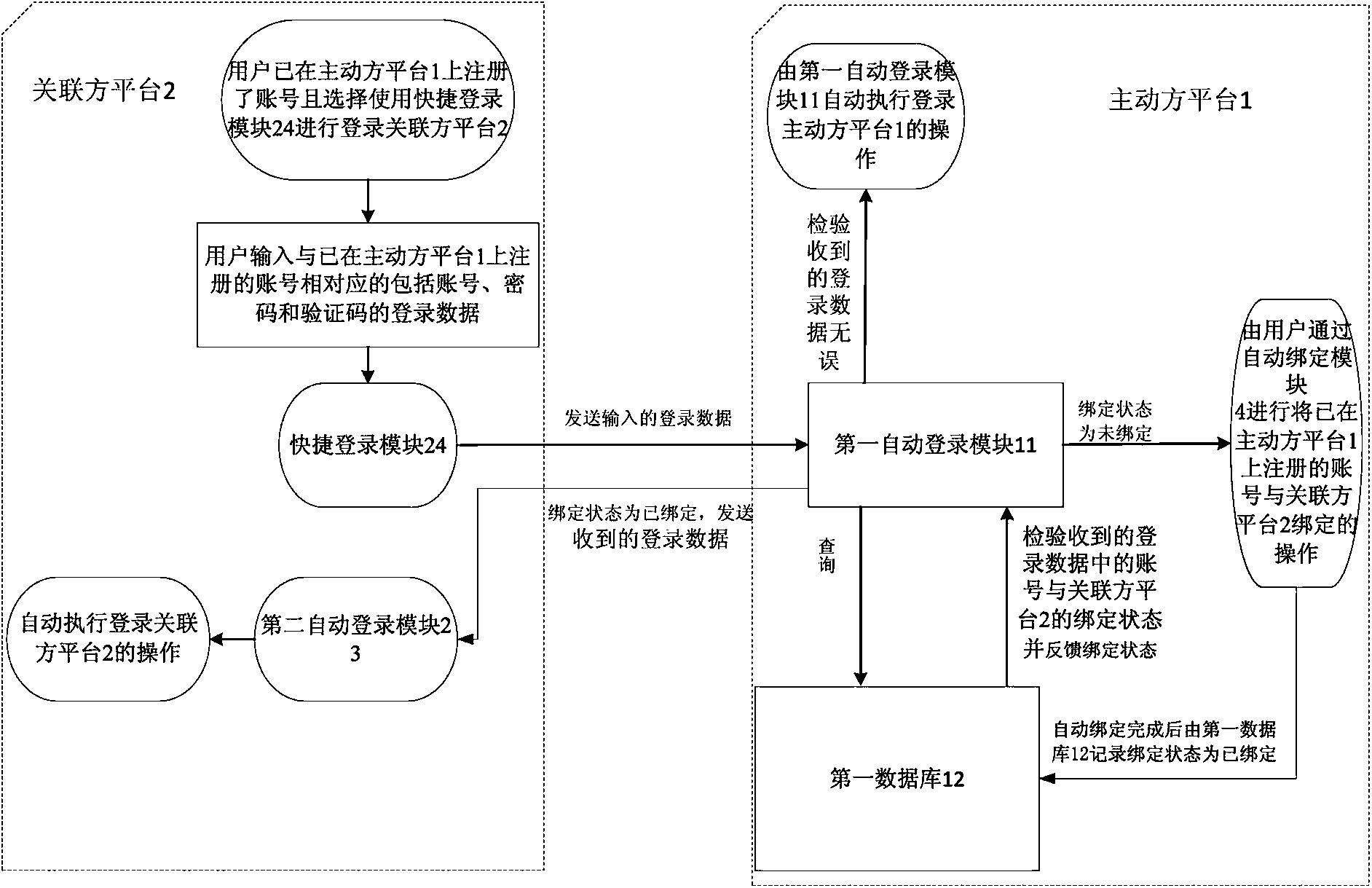Method for synchronously logging in to double platforms
A synchronous login, dual-platform technology, applied in the field of platform login, can solve the problems of user trouble, data communication and data synchronization process is not convenient enough, and achieve the effect of convenient operation and increased convenience
- Summary
- Abstract
- Description
- Claims
- Application Information
AI Technical Summary
Problems solved by technology
Method used
Image
Examples
Embodiment 1
[0028] Embodiment 1: A method for dual-platform synchronous login, the flow chart of which is as follows figure 1 shown, which includes the following steps:
[0029] Assume that the two platforms are the active party platform 1 and the related party platform 2, and assume that the active party platform 1 and the related party platform 2 have signed a written cooperation agreement in advance.
[0030] The first automatic login module 11, the first database 12, the binding module and the security information receiving verification module 13 are set in the active party platform 1, the binding module includes a manual binding module 3 and an automatic binding module 4, and the manual binding module 3 includes a specified account input module 31, and the automatic binding module 4 includes an associated account generation module 41, which is embedded in the related party platform 2 with a regular login module 21, a security information sending module 22, and a first automatic...
Embodiment 2
[0032] Embodiment two: if figure 2 As shown, the remaining parts are the same as in Embodiment 1, the difference is that when the user has registered an account on the active party platform 1 and chooses to use the quick login module 24 to log in to the associated party platform 2, the user can log in to the related party platform 2 in the quick login module 24. Input the login data corresponding to the account number registered on the active party platform 1 including account number, password and verification code, the first automatic login module 11 on the active party platform 1 is sent to the first automatic login module 11 on the active party platform 1 by the login data inputted by the quick login module 24 After the first automatic login module 11 checks that the received login data is correct, it executes the operation of logging into the active party platform 1. At the same time, the first automatic login module 11 checks the account number and association in the rece...
Embodiment 3
[0036] Embodiment three: as image 3 As shown, the remaining parts are the same as in the second embodiment. The difference is that when the binding status is unbound, the user will use the automatic binding module 4 to connect the account registered on the active party platform 1 with the related party platform 2. Binding operation, the specific binding process of the user using the automatic binding module 4 for account binding is as follows: the user confirms to start using the automatic binding module 4, and at this time, the associated account generation module 41 automatically generates an account binding on the affiliated party platform 2. Associated account, the initial name of the associated account is the same as the name of the account on the active party platform 1 bound to it, if the initial name of the associated account is the same as the name of other existing accounts on the affiliated platform 2, the associated account The generation module 41 adds a prefix o...
PUM
 Login to View More
Login to View More Abstract
Description
Claims
Application Information
 Login to View More
Login to View More - R&D
- Intellectual Property
- Life Sciences
- Materials
- Tech Scout
- Unparalleled Data Quality
- Higher Quality Content
- 60% Fewer Hallucinations
Browse by: Latest US Patents, China's latest patents, Technical Efficacy Thesaurus, Application Domain, Technology Topic, Popular Technical Reports.
© 2025 PatSnap. All rights reserved.Legal|Privacy policy|Modern Slavery Act Transparency Statement|Sitemap|About US| Contact US: help@patsnap.com



